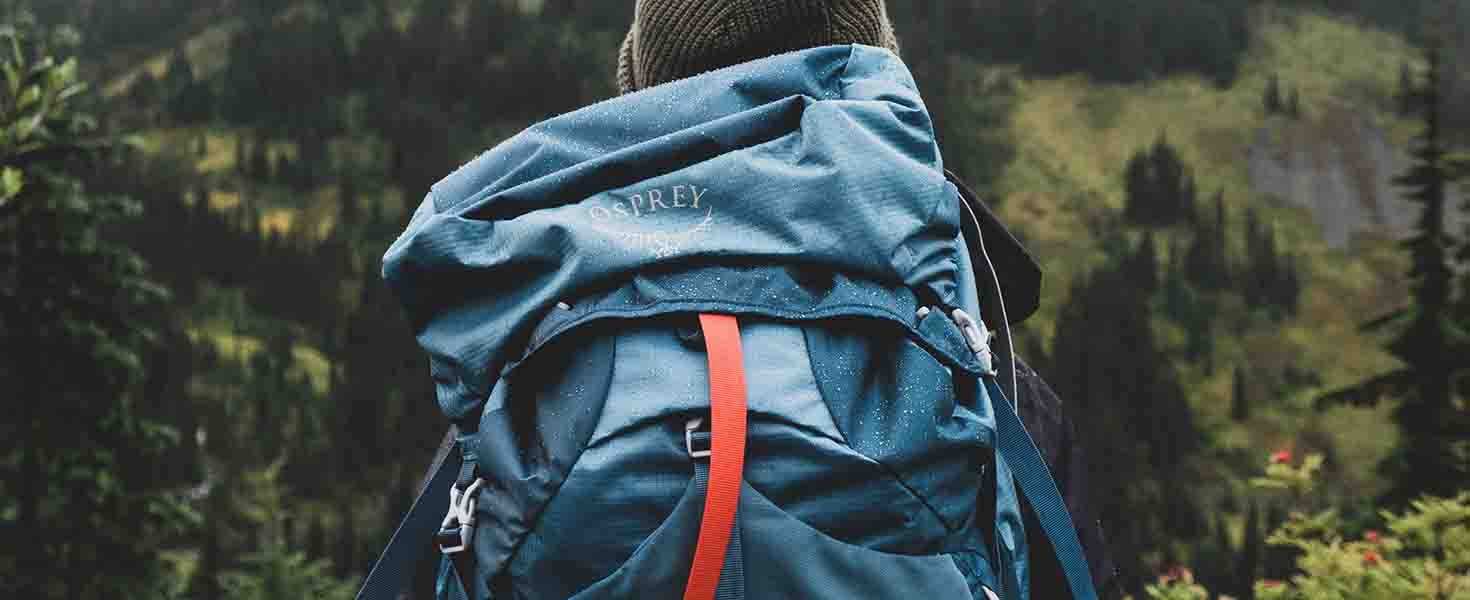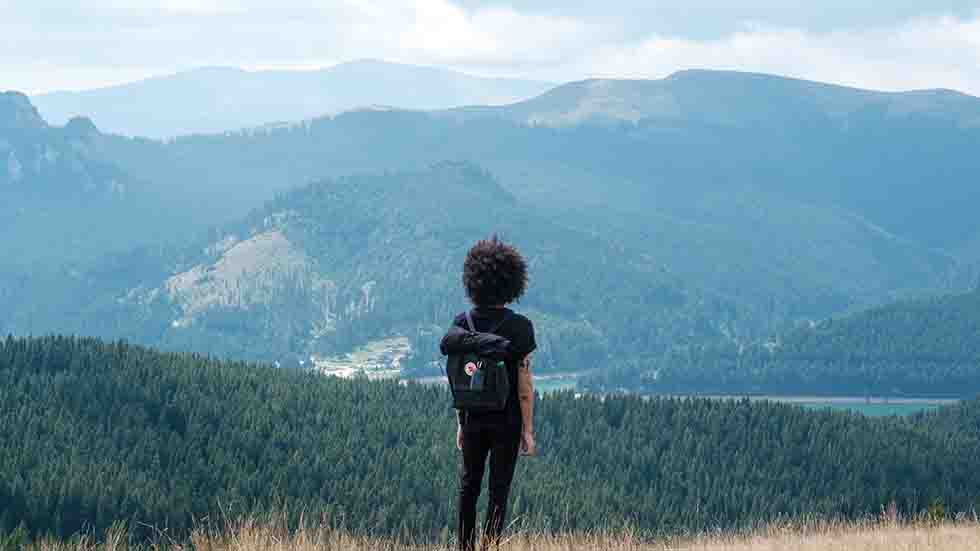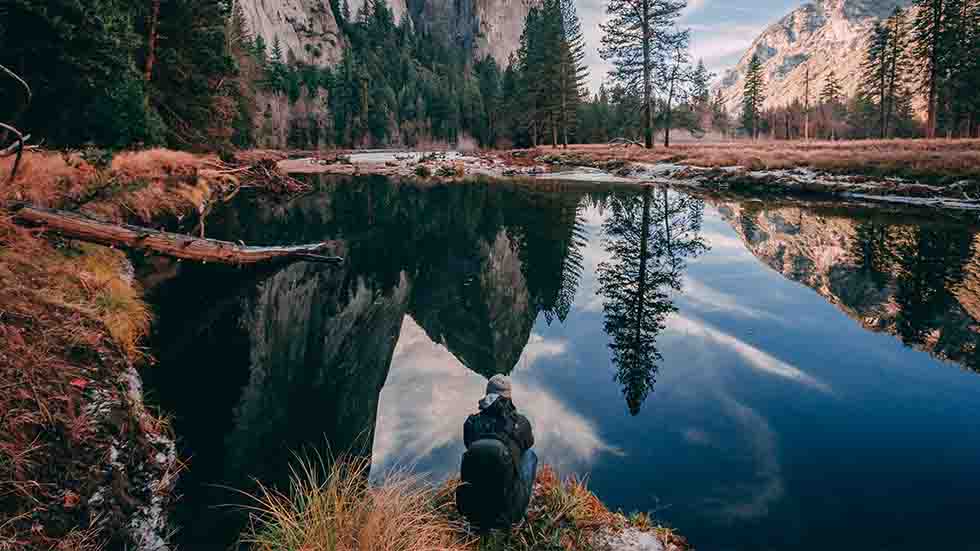
Our modern lifestyle is full of stress and technology. Sometimes you just need to get away from it all and be by yourself for a while. Planning a solo backpacking adventure is the perfect opportunity to unplug and focus on yourself for a change. Sure, backpacking with a partner or group is fun, but it’s also nice to plan exactly the trip you want and hike at your own pace.
That being said, backpacking solo does require certain considerations. You’ll have to pack in all of your gear yourself, and if something goes wrong, you’re on your own to figure it out. In this guide, we’ll explain how to plan the perfect solo backpacking adventure for you, plus minimize risk while you’re on the trail.

Why plan a solo backpacking trip?
For some people, backpacking is a social event to be enjoyed with family and friends. But some people crave nature and solitude. Not only that, but your friends and family are busy. Getting a group together can be a challenge. Planning to hit the trail by yourself is much easier: find your next weekend off and go!
Another fantastic benefit of solo backpacking is that you can hike at your own speed. Do you like to meander along the trails and take it all in? Or, would you rather hike briskly to your campsite, so you have more time to chill out when you get there? When you’re traveling solo, the pace is entirely up to you.
A solo backpacking trip is also a great way to challenge yourself. Not only do you have to carry everything yourself, but you’re on your own to make decisions. You’re stepping outside your comfort zone and learning something new about yourself while you do it.

How to minimize the risk of backpacking alone
When you mention that you are planning a solo backpacking trip, your friends and family may caution against it. Solo travel is often looked at as risky, and there are additional precautions you should take when backpacking alone.
Here’s how to minimize the risk of solo backpacking:
- Get first-aid training with an emphasis on wilderness medicine. You won’t be able to count on other people if you get injured, so you must have this knowledge yourself. When you’re packing, don’t skimp on your first-aid kit. Even if you don’t ever need it, you’ll feel a lot better knowing you have it.
- Know how to read a trail map and use GPS. The last thing you want to do is get lost, especially when you’re hiking alone.
- Share your route with a trusted family member or friend. Be specific with details such as where you’re going to park your car, where you plan to make camp, and have a designated check-in time for when you expect to return. Do not deviate from your plan after you hit the trail.
- Respect your limits. Don’t overdo it and don’t attempt to take on a trail that’s too advanced for you.
- Cell phone service may be limited or non-existent in the backcountry. Consider carrying a personal locator beacon (PLB) that can send an SOS no matter where you are.
Planning the perfect solo backpacking trip for you
Planning a solo backpacking trip is a lot like planning a group adventure, except you get to make all the decisions yourself! Think about how long you want to be on the trail, how far you want to hike, and what type of scenery you enjoy. Be sure to take the weather into consideration, as well as how you’ll get to your destination. Would you rather go somewhere close by, or are you ready to jump on a plane and hike in a faraway destination?
Here are some additional things to keep in mind:
- Remember, you’re going to be on your own, so don’t take on a trail that’s too advanced for you. Being alone is often challenging mentally and physically, so take it easy your first time out. You can always go for something a bit more challenging after you have a couple of solo trips under your belt.
- Consider hiking a trail you’ve done before. Knowing what to expect when you head out alone can be very reassuring.
- Pick a more popular trail. Since you’re traveling solo, it’s good to know other hikers will likely be in the area if you need help.

Rent your gear
Renting your backpacking gear is super convenient. Arrive Outdoors rents premium gear from top brands so you won’t have to worry about an important piece of gear failing you on the road. They have all the lightweight gear you need to keep you warm and dry during any season. Renting gear makes your trip more affordable, too.
Arrive will deliver everything you need right to your door or your destination, as long as it’s within the continental U.S. Head to the nearest FedEx location and use the provided prepaid shipping label to send your gear back when you’re done.
Final tips for backpacking solo
Backpacking solo can be scary and stressful, or it can be freeing and fun. Take the time to plan your trip carefully and take safety precautions so your mind will be at ease and you can enjoy your trip.
Remember, most of those forest sounds you hear in the night are just harmless critters or the wind blowing. Stay calm and have some music or a book to distract you in case you start to get nervous when you’re alone in the dark.
Most importantly, trust your instincts. If you’re uneasy about a situation, listen to that feeling. There’s no shame in moving on to a different site or even heading home if you’re getting a bad vibe.

